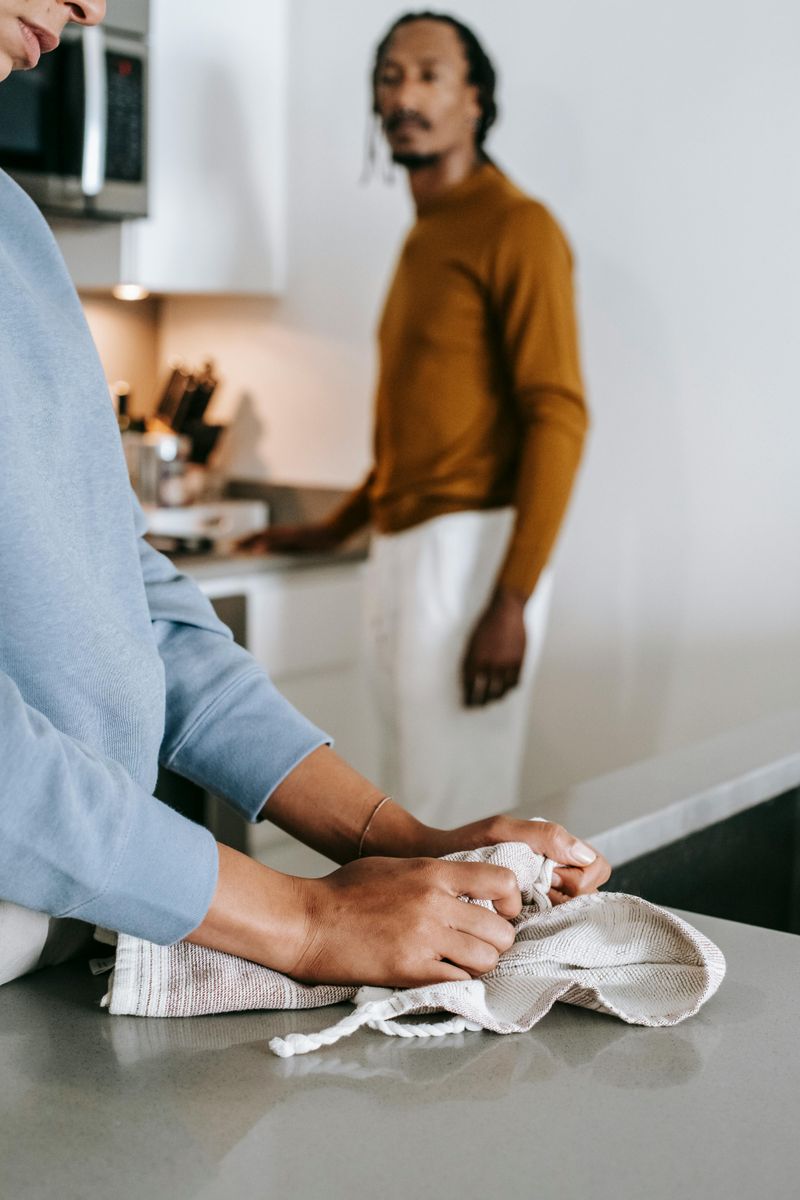12 Subtle Changes in a Wife’s Behavior That Show She’s Unhappy in Marriage

Marriages often change over time, but certain shifts in behavior can signal deeper issues beneath the surface. When a wife becomes unhappy, she might not directly express her feelings, instead showing her discontent through subtle changes in her daily patterns. Recognizing these quiet signals early can open the door to important conversations before small issues grow into unbridgeable gaps.
1. Extending Time Out of the House

Remember when coming home was her priority? Now errands mysteriously stretch from quick trips into hours-long absences. The gym session that used to be 45 minutes now takes two hours, and weekend coffees with friends extend well into the afternoon.
She’s not necessarily being deceptive. Home has simply become a place she needs breaks from rather than a haven she rushes back to. These extended absences create breathing room when the marriage feels suffocating.
Pay attention when “just running to the store” becomes a regular three-hour disappearance. The pattern of finding reasons to be elsewhere speaks volumes about what she’s avoiding at home.
2. Investing More Energy Into Friendships

Her girlfriends suddenly become her emotional lifeline. Those text threads that once quieted after dinner now ping well into the night. She laughs more freely on phone calls with friends than she has with you in weeks.
This shift happens because she’s seeking the emotional connection and validation that’s missing at home. Friends become safe confidants who offer the understanding she craves. They fill the emotional void when a marriage feels empty.
Notice if she eagerly shares details of her day with friends but offers you only the highlight reel. When outside relationships consistently receive the authentic parts of herself that used to be yours, the marriage has taken a back seat.
3. Keeping Conversations Surface-Level

Conversations that once flowed easily may now feel like pulling teeth. Instead of sharing openly, she sticks to practical topics – schedules, groceries, bills – while steering clear of anything that might open emotional doors.
This communication shift acts like protective armor. By keeping things surface-level, she avoids vulnerability that could lead to conflict or disappointment. The weather becomes fascinating; feelings become off-limits.
Pay attention to what’s missing rather than what’s said. When she consistently deflects deeper topics or offers only minimal responses, she’s drawing an invisible boundary that signals growing disconnection.
4. Obsessing Over Self-Improvement

Suddenly she’s devouring self-help books, signing up for personal growth workshops, or completely overhauling her appearance. This newfound focus on becoming “better” often comes with a concerning subtext: the marriage isn’t fulfilling her needs.
These improvement quests can be wonderful, but the motivation matters. When they spring from dissatisfaction rather than inspiration, they represent a search for meaning outside the relationship. Each new class or makeover becomes a step toward rediscovering her identity separate from “wife.”
The red flag isn’t the self-improvement itself – it’s when these pursuits explicitly exclude you or when she shows little interest in sharing this growth journey with her partner.
5. Avoiding Physical Intimacy

The casual touches that once peppered your days – a hand on the shoulder, a quick kiss in passing – have quietly disappeared. Physical distance often reflects emotional distance brewing beneath the surface.
Many assume this only refers to bedroom intimacy, but the shift usually begins with everyday affection. The goodnight kiss becomes a formality. The casual hand-holding stops. She might flinch slightly when you reach for her or subtly increase physical space between you on the couch.
Physical connection requires vulnerability, and vulnerability requires trust. When that trust feels shaky, the body often pulls back before words can explain why. This withdrawal is among the most painful signals but also among the most honest.
6. Spending More Time on Their Phone

The smartphone becomes her constant companion, a digital shield against uncomfortable silences. She might scroll endlessly through social media while sitting beside you on the couch, physically present but mentally elsewhere.
This digital retreat offers both distraction and connection – just not with the person in the same room. The phone creates a convenient barrier, allowing her to avoid difficult conversations while still feeling engaged with something.
Watch for this pattern especially during times that were previously reserved for connection, like dinner or before bed. When the glowing screen consistently takes priority over face-to-face interaction, something significant has shifted.
7. Creating a Separate Routine

Dinner invitations that once felt routine may now be brushed off with a casual “later.” Where your schedules once aligned, she now arranges her days to minimize overlap. Bedtimes, meals, and weekend activities that used to be shared happen in separate shifts.
This schedule separation isn’t accidental. It’s a buffer that reduces friction but also weakens connection. By living on different timetables, she creates breathing room and independence when togetherness feels tense.
Watch for the consistency of these choices. When errands, hobbies, or routines perfectly conflict with your free time, she’s building a life alongside rather than intertwined with yours.
8. Staying Busier Than Usual

Her calendar suddenly overflows with commitments, leaving precious little downtime for reflection or connection. This perpetual motion serves a purpose – when every minute is scheduled, there’s no space for uncomfortable feelings or conversations to emerge.
Busyness becomes both escape and excuse. “I’m just so swamped” explains away emotional distance while providing genuine distraction from relationship dissatisfaction. The constant activity creates a convenient barrier against addressing deeper issues.
The telltale sign isn’t productivity itself but the avoidance of stillness. When she seems almost panicked by an unexpected free evening or fills quiet weekends with frantic activity, she might be running from the silence where relationship truths become too loud to ignore.
9. Daydreaming About a Different Life

She may start bringing up alternate life paths, different cities, or hypothetical futures that noticeably leave out parts of your shared life. These aren’t casual musings but rather glimpses into her emotional escape routes.
Fantasy offers temporary relief when reality feels disappointing. The dreamy look that crosses her face when discussing a friend’s solo adventure or career change reveals inner longing. She’s mentally trying on different lives to see if they might fit better than the one she has now.
Listen for the frequency and enthusiasm in these what-ifs. When hypothetical scenarios consistently sound more appealing than present reality, she’s already emotionally investing in alternatives to the marriage as it stands.
10. Expressing Frustration in Small Jabs

An eye roll paired with a dismissive remark can speak volumes. What might begin as the occasional sarcastic comment can slowly evolve into a pattern of subtle digs, each carrying more weight than the words themselves suggest.
These verbal paper cuts – often delivered with plausible deniability – release building resentment without risking direct confrontation. Each small jab represents a larger feeling left unexpressed. They become pressure valves for emotions that feel unsafe to voice directly.
Pay attention to the cumulative effect rather than each individual comment. When good-natured teasing transforms into remarks with a bitter edge, or when “jokes” consistently target sensitive spots, she’s communicating unhappiness in code rather than conversation.
11. Losing Interest in Shared Traditions

That annual pumpkin patch visit or holiday ritual that once brought joy may suddenly feel like an obligation she’d rather skip. Traditions that created your unique couple identity now seem unimportant or burdensome to her.
Shared traditions represent investment in a shared future. When she withdraws from these meaningful rituals, she’s often pulling back from the relationship itself. The holiday decorating or anniversary celebration loses its shine because the connection it celebrates has dimmed.
This change typically happens gradually. First comes reduced enthusiasm, then passive participation, and finally resistance. When activities that once defined your relationship as special become just another item on her to-do list, the emotional foundation those traditions were built on has begun to crack.
12. Confiding in Someone Else About Her Marriage

That awkward moment when her coworker knows more about your recent argument than you realized she’d shared. When marriage struggles become regular conversation topics with others – particularly with one specific friend or family member – emotional intimacy has found a new home outside your relationship.
Everyone needs perspective sometimes, but consistent external processing signals a significant shift. By sharing vulnerable relationship details with others first (or exclusively), she’s formed emotional bonds that may actually deepen the distance between you two.
The concerning pattern isn’t seeking occasional advice but developing a primary confidant for relationship matters who isn’t you. When someone else becomes her go-to source for processing feelings about the marriage, that outside relationship has begun replacing the emotional intimacy that belongs within the partnership.

Comments
Loading…